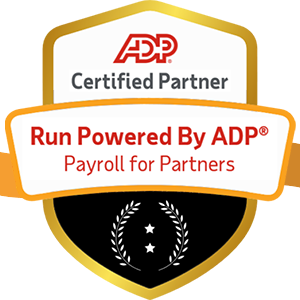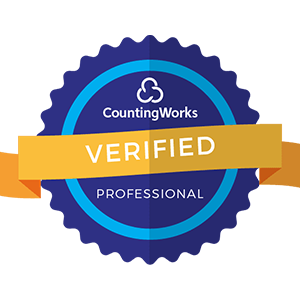
Executive Summary: Organizations using predictive hiring see 24% better quality of hire and 70% faster time-to-fill compared to traditional methods. By applying data analytics and machine learning to talent acquisition, companies can identify top performers before they're hired while reducing bias and improving diversity outcomes.
Traditional hiring relies heavily on intuition, past experience, and subjective assessments that often miss the mark. Resume keywords, interview impressions, and gut feelings have guided countless hiring decisions, yet many organizations still struggle with poor hires, lengthy recruitment cycles, and unconscious bias affecting their talent pipeline.
The emergence of predictive hiring represents a fundamental shift toward evidence-based talent acquisition. Rather than guessing which candidates might succeed, organizations can now analyze patterns from their most successful employees and use those insights to identify similar potential in new candidates.
This approach doesn't eliminate human judgment—instead, it enhances decision-making by providing objective data points that complement traditional evaluation methods. The result is a more accurate, efficient, and fair hiring process that benefits both employers and job seekers.

At its core, predictive hiring applies data science principles to recruitment challenges. The process analyzes multiple data sources to identify characteristics, experiences, and behaviors that correlate with high performance in specific roles and organizational contexts.
Think of it as pattern recognition on a massive scale. When you examine hundreds or thousands of employees across similar positions, certain commonalities emerge among top performers. These patterns might include specific skill combinations, career progression patterns, educational backgrounds, or even behavioral indicators gathered through assessments and interviews.
Machine learning algorithms excel at identifying these complex relationships that human reviewers might miss. They can process vast amounts of information simultaneously, weighing multiple factors to generate predictive scores that indicate a candidate's likelihood of success.
The sophistication of these models continues advancing rapidly. Early systems focused primarily on resume matching and basic qualifications. Modern predictive hiring platforms analyze communication styles, problem-solving approaches, cultural fit indicators, and even subtle behavioral cues captured through video interviews or assessment responses.
Organizations implementing predictive hiring report significant improvements across key recruitment metrics. Quality of hire improvements stem from better alignment between candidate capabilities and role requirements, leading to higher performance ratings and faster time-to-productivity for new employees.
Time-to-hire reductions occur through more efficient screening processes. Instead of manually reviewing hundreds of resumes, recruiters can focus their attention on candidates with the highest predictive scores. This concentration of effort on promising candidates accelerates the entire recruitment timeline.
Cost savings emerge from multiple sources. Reduced time-to-hire lowers recruitment costs while improved quality of hire decreases turnover-related expenses. When you consider that replacing an employee can cost 50% to 200% of their annual salary, even modest improvements in retention generate substantial financial returns.
Diversity and inclusion outcomes often improve when organizations implement well-designed predictive hiring systems. By focusing on objective performance indicators rather than subjective impressions, these systems can help mitigate unconscious bias that affects traditional hiring processes.
Enhanced candidate experience represents another valuable benefit. Faster feedback, more consistent evaluation processes, and transparent criteria create positive impressions even among candidates who aren't selected, protecting employer brand and supporting future recruitment efforts.

Successful predictive hiring implementation requires systematic attention to data quality, model development, and ongoing refinement. The foundation starts with comprehensive data collection from existing high-performing employees.
Effective models draw from multiple data sources to create comprehensive candidate profiles. Internal sources include performance reviews, productivity metrics, engagement survey results, promotion history, and retention data. External sources might encompass assessment results, structured interview responses, work samples, and even publicly available professional information.
The key lies in identifying data points that genuinely correlate with success rather than simply collecting information because it's available. Irrelevant data can actually degrade model performance by introducing noise that obscures meaningful patterns.
Data preparation involves cleaning, standardizing, and transforming raw information into formats suitable for analysis. This technical process ensures consistency across different sources and time periods while handling missing information appropriately.
Feature engineering transforms raw data into meaningful variables that algorithms can use effectively. This might involve creating composite scores from multiple assessment dimensions, calculating career progression rates, or extracting communication style indicators from interview transcripts.
Domain expertise becomes crucial during this phase. HR professionals who understand what drives success in specific roles can guide data scientists toward features that make business sense rather than relying purely on statistical correlations that might not hold up over time.
Model selection depends on the specific use case and available data. Logistic regression models work well for binary outcomes like "likely to succeed" versus "unlikely to succeed." Decision tree models provide interpretable results that help explain why specific predictions were made. Neural networks can capture complex interactions but may be harder to explain to stakeholders.
Ensemble methods that combine multiple algorithms often deliver the best performance by leveraging the strengths of different approaches while mitigating individual weaknesses.
Rigorous testing ensures models perform accurately on new data before deployment. This involves splitting historical data into training and validation sets, testing model performance across different time periods, and examining results across demographic groups to identify potential bias issues.
Cross-validation techniques help assess how well models generalize to new situations. If a model performs well on training data but poorly on validation data, it may be overfitting to specific patterns that won't hold for future candidates.
Deployment strategies vary based on organizational needs and technical capabilities. Some companies integrate predictive scores directly into their applicant tracking systems, while others use standalone platforms that provide recommendations to recruiters and hiring managers.
Real-world implementations demonstrate the practical value of predictive hiring across different industries and use cases.
Unilever transformed their graduate recruitment process by replacing traditional methods with a digital-first approach incorporating predictive analytics. Candidates complete online assessments and video interviews that are analyzed using machine learning algorithms. This approach reduced their hiring timeline from four months to four weeks while improving diversity outcomes and candidate satisfaction scores.
The system analyzes multiple factors including cognitive ability, personality traits, and responses to situational judgment scenarios. By focusing on these objective measures rather than traditional credentials, Unilever expanded their talent pool while maintaining high performance standards.
Google's approach emphasizes data-driven insights gathered from years of tracking employee performance across different roles and teams. Their models consider factors like past project complexity, collaboration patterns, and problem-solving approaches demonstrated during the interview process.
Rather than relying heavily on GPA or prestigious university credentials, Google's analysis revealed that these traditional indicators had limited correlation with long-term performance. This insight led them to expand their recruiting beyond elite universities and consider candidates with non-traditional backgrounds.
JetBlue focused their predictive hiring efforts on customer-facing roles where personality traits and service orientation significantly impact performance. Their models analyze assessment responses, language skills, and experience patterns to identify candidates most likely to deliver exceptional customer experiences.
The airline industry's unique challenges—irregular schedules, high-stress situations, and diverse customer interactions—require specific personality traits and resilience factors that traditional interviews might miss. Predictive models help identify these characteristics more reliably.
While predictive hiring offers substantial benefits, successful implementation requires careful attention to several key challenges.
Predictive models are only as good as the data they're trained on. Inconsistent performance data, incomplete candidate information, or biased historical records can lead to flawed predictions that perpetuate or amplify existing problems.
Organizations must invest in data quality initiatives before implementing predictive hiring. This includes standardizing performance measurement systems, ensuring consistent data collection practices, and addressing historical gaps that might skew results.
Regular data audits help identify and correct quality issues over time. As new data becomes available, models should be retrained to incorporate the most current and accurate information.
Algorithmic bias represents one of the most serious concerns in predictive hiring. If historical data reflects discriminatory practices, machine learning models may perpetuate these biases at scale.
Proactive bias testing examines model outcomes across different demographic groups to identify disparate impacts. If certain groups consistently receive lower predictive scores despite similar qualifications, the model may be incorporating biased patterns from historical data.
Mitigation strategies include adjusting training data to remove biased examples, incorporating fairness constraints into model optimization, and using ensemble methods that combine multiple perspectives to reduce individual model biases.
Regular auditing by diverse teams helps identify bias issues that might not be apparent to the original development team. External audits can provide additional objectivity and expertise in bias detection techniques.
Predictive hiring involves collecting and analyzing significant amounts of personal information, raising legitimate privacy concerns. Candidates may worry about how their data is used, stored, and shared throughout the recruitment process.
Transparency helps address these concerns by clearly communicating what data is collected, how it's used in decision-making, and what rights candidates have regarding their information. Privacy policies should be written in plain language that candidates can easily understand.
Consent mechanisms should give candidates meaningful choices about data collection and use. This might include options to participate in assessments without having results used for predictive scoring or the ability to request explanation of how specific factors influenced their evaluation.
Data minimization principles suggest collecting only information that's directly relevant to job performance predictions. While it might be technically possible to gather extensive personal information, ethical implementation focuses on job-relevant factors.
Predictive hiring should augment rather than replace human decision-making. While algorithms excel at processing large amounts of data consistently, humans bring contextual understanding, ethical reasoning, and interpersonal insights that remain valuable.
Hybrid approaches that combine predictive scores with traditional evaluation methods often deliver the best results. Recruiters can use predictive insights to prioritize their attention while still conducting meaningful conversations with candidates.
Training programs help hiring managers understand how to interpret and use predictive scores effectively. This includes understanding model limitations, recognizing when human judgment should override algorithmic recommendations, and maintaining focus on candidate experience throughout the process.

The predictive hiring landscape continues evolving rapidly as new technologies and methodologies emerge.
Natural language processing capabilities are improving the analysis of unstructured data sources like cover letters, interview transcripts, and work samples. These techniques can extract insights about communication skills, cultural fit, and problem-solving approaches that traditional keyword matching might miss.
Real-time sentiment analysis during video interviews provides additional behavioral insights while maintaining candidate privacy. These systems can identify confidence levels, stress responses, and communication patterns that correlate with job performance.
Predictive models are becoming more sophisticated in their ability to account for role-specific requirements and organizational context. Rather than using generic success indicators, advanced systems can adapt their criteria based on specific job requirements and company culture factors.
The shift toward skills-based hiring aligns well with predictive analytics capabilities. Instead of focusing primarily on credentials and experience, models can identify specific competencies and aptitudes that drive success in particular roles.
This approach expands talent pools by recognizing that relevant skills can be developed through various pathways, not just traditional educational or career routes. Predictive models can identify candidates with high learning potential and transferable skills even if they lack direct experience.
Dynamic skills assessment through gamified scenarios and simulations provides richer data for predictive models while creating engaging candidate experiences. These assessments can measure cognitive abilities, problem-solving approaches, and behavioral tendencies more accurately than traditional testing methods.
Predictive hiring is increasingly integrated with other HR analytics initiatives to create comprehensive talent management systems. Performance management, learning and development, and succession planning systems can all benefit from similar predictive approaches.
This integration enables end-to-end talent analytics that track employee journeys from initial hiring through career development and eventual succession planning. Organizations gain deeper insights into what drives long-term success and can make more informed decisions about talent investment.
Continuous learning algorithms update predictions based on actual employee performance over time, creating feedback loops that improve model accuracy and relevance. This dynamic approach ensures that predictive systems adapt to changing role requirements and organizational needs.
Organizations considering predictive hiring should follow a structured approach that builds capability gradually while demonstrating value.
Start by establishing clear objectives and success metrics for predictive hiring initiatives. Identify specific pain points in current recruitment processes that analytics could address, whether that's improving quality of hire, reducing time-to-fill, or enhancing diversity outcomes.
Assess data readiness by inventorying available information sources and identifying gaps that need to be addressed. This includes both candidate data and performance data from existing employees.
Build internal capability through training programs for HR teams and hiring managers. Even sophisticated algorithms require knowledgeable users who understand their capabilities and limitations.
Begin with pilot programs focused on specific roles or departments where success can be measured clearly. High-volume positions or roles with well-defined performance metrics often work well for initial implementations.
Develop simple models using readily available data before investing in complex systems. Early wins help build organizational support for more ambitious initiatives.
Establish feedback mechanisms to capture input from recruiters, hiring managers, and candidates throughout the pilot period. This feedback guides refinements and helps identify unexpected challenges or opportunities.
Expand successful approaches to additional roles and departments while maintaining focus on continuous improvement. Monitor performance metrics regularly and adjust models based on new data and changing requirements.
Integrate predictive hiring capabilities with existing HR technology systems to create seamless workflows for users. Investment in user experience improvements pays dividends in adoption and effectiveness.
Develop advanced analytics capabilities that can address more complex questions about talent acquisition strategy and long-term workforce planning.
Successful predictive hiring implementation requires alignment with broader organizational strategies and values.
Introducing predictive hiring represents a significant change for many organizations, affecting established processes and relationships. Effective change management helps ensure smooth adoption while addressing concerns from stakeholders.
Communication strategies should emphasize how predictive hiring enhances rather than replaces human judgment. Stakeholders need to understand the technology's capabilities and limitations to use it effectively.
Training programs should be comprehensive and ongoing, covering not just technical aspects but also ethical considerations and best practices for combining algorithmic insights with human decision-making.
Organizations that master predictive hiring gain significant competitive advantages in talent acquisition. They can identify high-potential candidates faster, reduce recruitment costs, and build stronger teams that drive business performance.
However, these advantages depend on thoughtful implementation that addresses ethical concerns and maintains positive candidate experiences. Organizations that prioritize efficiency over fairness risk damaging their employer brand and facing regulatory scrutiny.
Long-term success requires viewing predictive hiring as part of a broader digital transformation of HR rather than a standalone technology solution. Integration with other analytics initiatives creates compound benefits that are difficult for competitors to replicate.
The future of talent acquisition lies in intelligent systems that combine the pattern recognition capabilities of machine learning with the contextual understanding and ethical reasoning that humans provide. Organizations that successfully navigate this transformation will be better positioned to attract and retain the talent needed for sustained success in an increasingly competitive marketplace.


